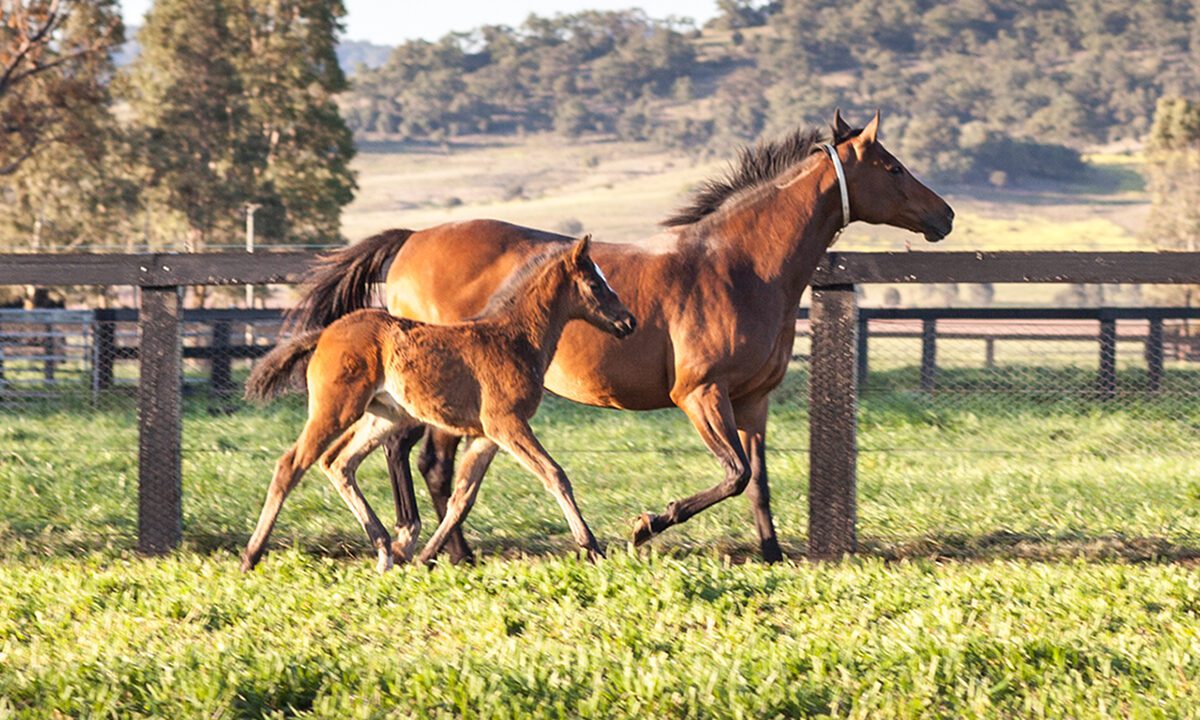Racing, performance, or pleasure, we would all love to have foals born with perfect legs, however angular limb deformities and associated problems are very common in the newborn and developing foal.
There are three common types of limb conditions found in the young foal; angular limb deformity or deviation of the limb, flexor and extensor abnormalities, and ruptured extensor tendon. These abnormalities are often found in one or more limbs, but in most instances these abnormalities do not affect a foal’s ability to stand or walk. Factors that may contribute to these conditions include: abnormal intrauterine positioning, hormonal Imbalances, nutritional Imbalances, unfavorable conformation, incomplete ossification, immaturity of musculoskeletal tissues, flexor tendon laxity, flexor tendon contracture, and young rapidly growing foals.
Angular Limb Deformities
Angular limb deformity (ALD) refers to an outward (valgus) or inward (varus) deviation of a limb. The point of deviation for most limb deformities is associated with a joint. The carpus (knee) is, by far, the most common joint affected. The fetlock (ankle) and tarsus (hock) can also be affected. More than one leg is often involved.
The cause of angular limb deformities is quite complex. In general, it can be associated with unequal (asymmetric) growth of the limb long bones, such as the radius or cannon bone. One side of the long bone grows faster than the opposite side. This occurs in the growth plate near the joint, resulting in deviation of the limb. This asymmetric growth may develop as a result of abnormal weight-bearing on the limb such as with;
- Excessive body development in relation to bone/joint development,
- A lameness,
- Inflammation of the growth plate (physitis),
- Or injury to the growth plate.
Many angular limb deformities can be diagnosed from the clinical appearance of the limbs. However, radiographs are sometimes required to be taken of the affected leg or legs. This will help the veterinarian to determine more specifically the exact location of the deviation.
Treatment
The type of treatment indicated for ALD depends on several factors including the
- Age of the foal,
- The joint involved,
- And the location and severity (degrees) of the deviation.
There is a narrow time window for correction of an ALD – this lies only while the growth plate is open and there is potential for bone growth. For example, for a fetlock ALD the window of opportunity for correction closes after only 3-4 months of age and all intervention must be performed well before this time. It is therefore very important that a foal with ALD be assessed and treated as soon as possible in order to improve the chances of a successful outcome.
Confinement and Diet Modification
Regardless of the severity and location of the ALD, confinement is important. Excessive exercise will only aggravate and make the problem worse. In many cases, stall rest alone can assist with correcting the ALD. Diet modification of creep fed or older foals is also important. Along with stall confinement and diet modification, corrective hoof trimming is also important. Your veterinarian or farrier will be able to assist with hoof care.
Surgery
Severe forms of ALD require surgery. The goal of surgical intervention is to alter growth at the growth plate of the long bone involved, such as the radius. The surgical procedures used are periosteal stripping or transphyseal bridging.
Periosteal stripping involves lifting the covering of the bone (periosteum) just above the growth plate on the “short” side of the long bone. This surgical procedure is used to enhance the growth on the side of the long bone that is slower, to encourage it to “catch-up” with the other side. This procedure is performed on cases of ALD of mild-moderate severity. It does not result in overcorrection.
Transphyseal bridging involves placing a screw in the long bone above and below the growth plate on the “long” side of the bone and placing a piece of stainless steel wire between them, or placing a screw directly across the growth plate on the faster side. The purpose of these implants is to slow or stop the growth at the growth plate on that side of the bone which is longer, so that the other side can catch-up. It is very important that the foal be closely monitored as the implants must be removed as soon as correction has occurred, otherwise overcorrection may occur. This type of procedure is usual performed on more severe cases, or on older foals where there is only limited growth left at that particular growth plate.
Limb Casts or Splints
Limb casts or splints may be used if the ALD is due to weak ligaments and bones associated with the affected joint. This type of ALD mainly affects the carpus (knee) and tarsus (hock). It is observed more frequently in premature foals in which the bones of the carpus or tarsus are not completely mineralized at the time of birth. A cast or splint is applied to the limb to help support the limb and maintain it in a straight position until the ligaments and bones mature enough to hold the weight of the foal. Usually only 10 to 14 days is required.

